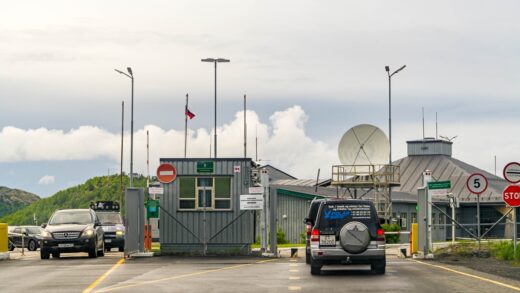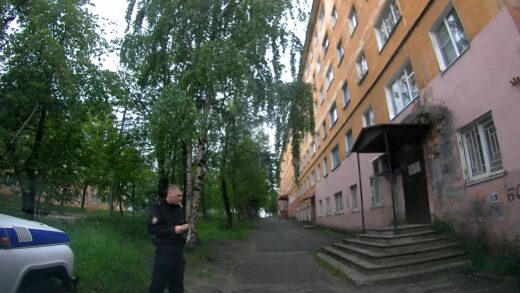This essay was first published on Issue 08/2021 of Lonely Planet China magazine
This English version was translated from Chinese original using DeepL. I apologize for any mistakes made by this AI translation tool.
Hook: The Arctic, a unexpected encounter with a football ticket
In that six-month overlanding trip around Europe, crossing the North Pole was not in my plan. However, in time for the 2018 FIFA World Cup in Russia, the “visa-free for spectators” policy made the tourist visa for Russia, which was difficult to obtain outside of China, readily available. I can’t miss such a good thing.
Hunting for a travel route on a map, a road starting in St. Petersburg and stretching almost straight north along Russia’s western border, the R21, caught my eye. The road leads all the way to Murmansk, the largest city built by man in the Arctic Circle. It continues on to the Russian border with Norway – the world’s northernmost land crossing. Once in Norway, the “northernmost point of the European continent” at 71°N latitude is within easy reach. A three-country Arctic crossing trip through Russia north to Norway and then south to Finland took shape in my mind.
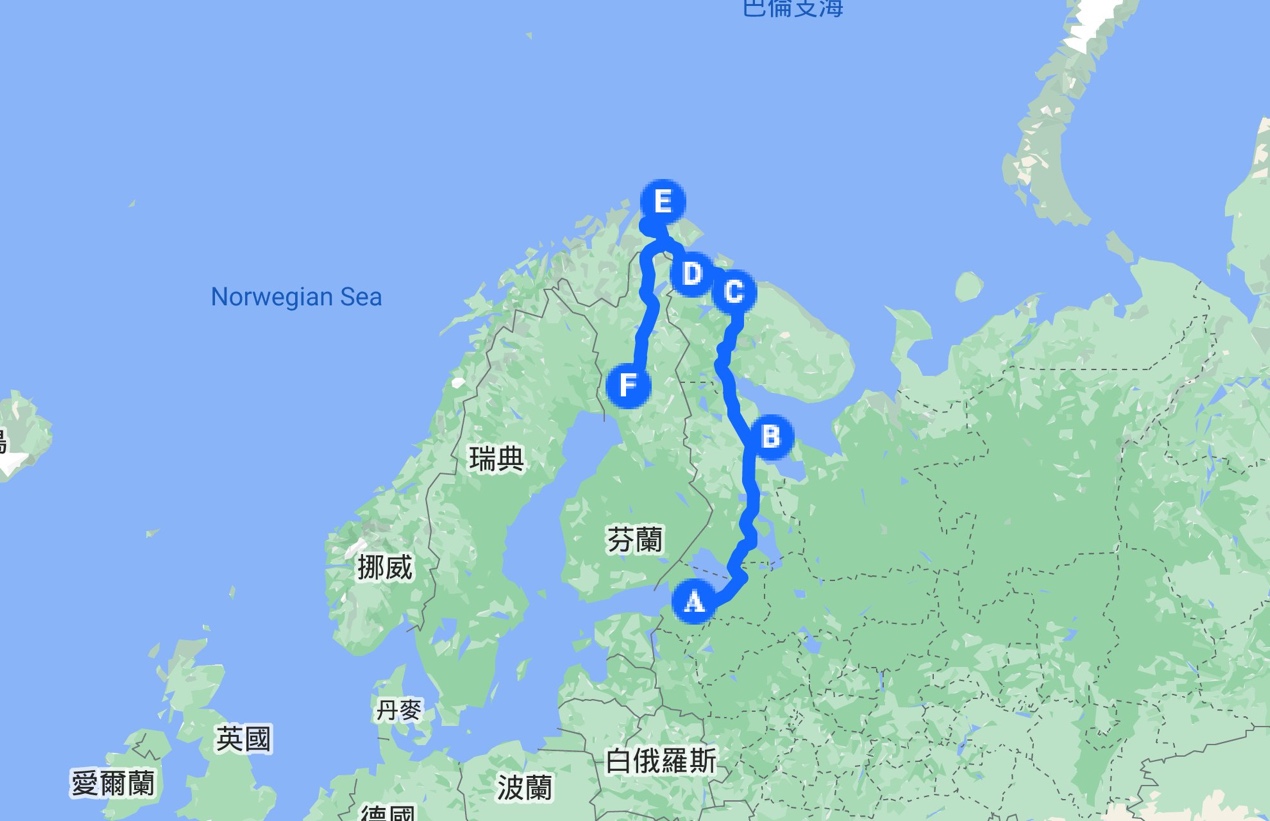
Compared to Antarctica, the ultimate dream of many travelers, the other side of the world, the Arctic is certainly much less popular. As one of the world’s most expensive travel destinations, a trip to Antarctica can cost tens of thousands of RMB per person, including boat tickets and round-trip travel expenses. Even so, most “Antarctic cruise” destinations (such as King George Island) can only be described as belonging to “Antarctica”, and are actually hundreds of kilometers away from the geographic Antarctic, i.e., within the Antarctic Circle.
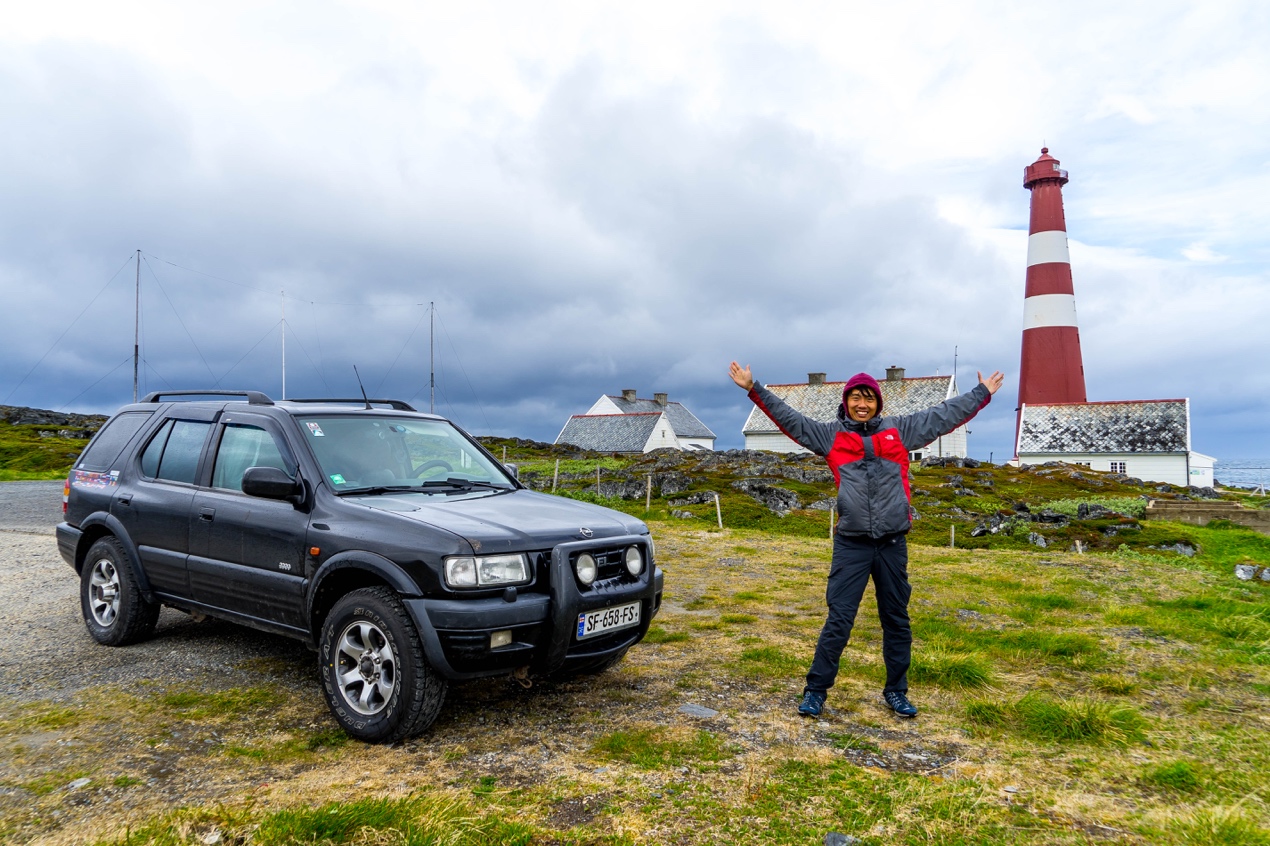
But the Arctic is a completely different story. Thanks to the “North Atlantic Warm Current”, which we all learned about in geography class, the Arctic near Europe is unusually warm, with average summer temperatures reaching the high teens. Although much warmer than the Antarctic, it is located within the Arctic Circle, the “North Pole” in the full geographical sense. The mild climate and direct road access make “driving to the North Pole” far less difficult than one might think.
To borrow the famous joke – how many steps does it take to travel to the North Pole? The answer is just three: one, drive into the Arctic Circle; two, have fun; and three, drive out of the Arctic Circle.
Although this is theoretically true, we are still worried about the unknown: will a trip to the “ends of the world” really be as easy as a weekend excursion?
Solovetsky, camping at the “Gulag Archipelago”
In 1982, Soviet writer Solzhenitsyn’s “The Gulag Archipelago” was first time published for the first time in China. It was so popular, and at the same time the horrific Gulag concentration camp, once a Soviet state secret, became known to the people of the country. The Solovetsky Islands, located in the middle of the White Sea, not far from the Arctic Highway, were the site of the first Gulag concentration camp. From its establishment in 1923 to its closure in 1939, half a million political prisoners were exiled to this isolated island, making it the most symbolic of the Gulag camps – “Solovetsky” appears 193 times in the book. Perhaps Solzhenitsyn even drew inspiration from this geographic archipelago when he compared the Gulag camps, which spread throughout the former Soviet Union, to the “archipelago”.
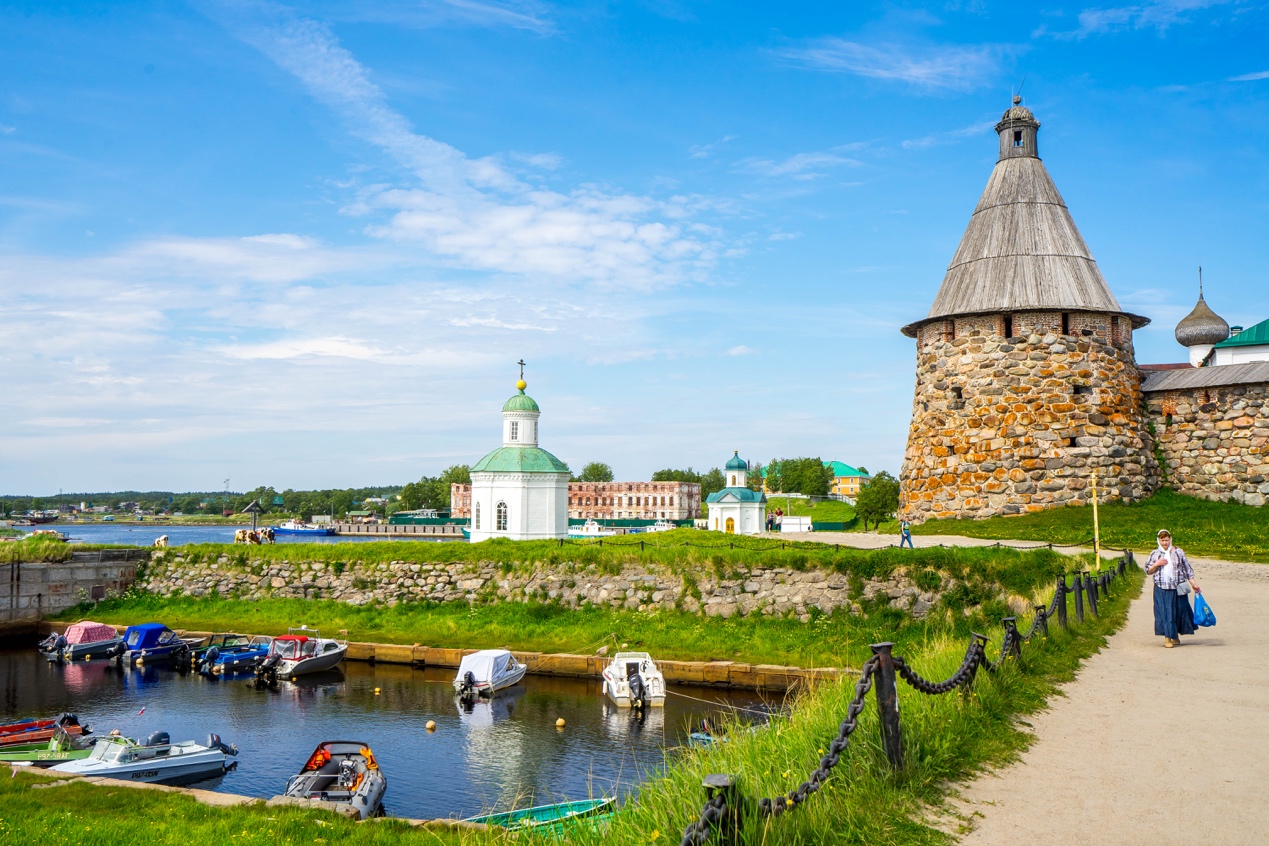
With the collapse of the Soviet Union and the end of the Cold War, that dusty past was fading into oblivion. “It’s June, and the book says there’s a chance to see beluga whales on the island, so let’s go camping!” For my young partner, “going to the island to see the beluga whales” was clearly more attractive than the dark history of the concentration camps.
Turning right off the smooth, wide Arctic highway, the road is replaced by a crumbling road in a state of disrepair, giving the illusion of driving into history. The ferry ride from the balky town of Rabocheostrovsk took nearly three hours, and apart from a few European and American tourists, most of the passengers were islanders, returning with their bags of purchases and tired faces.
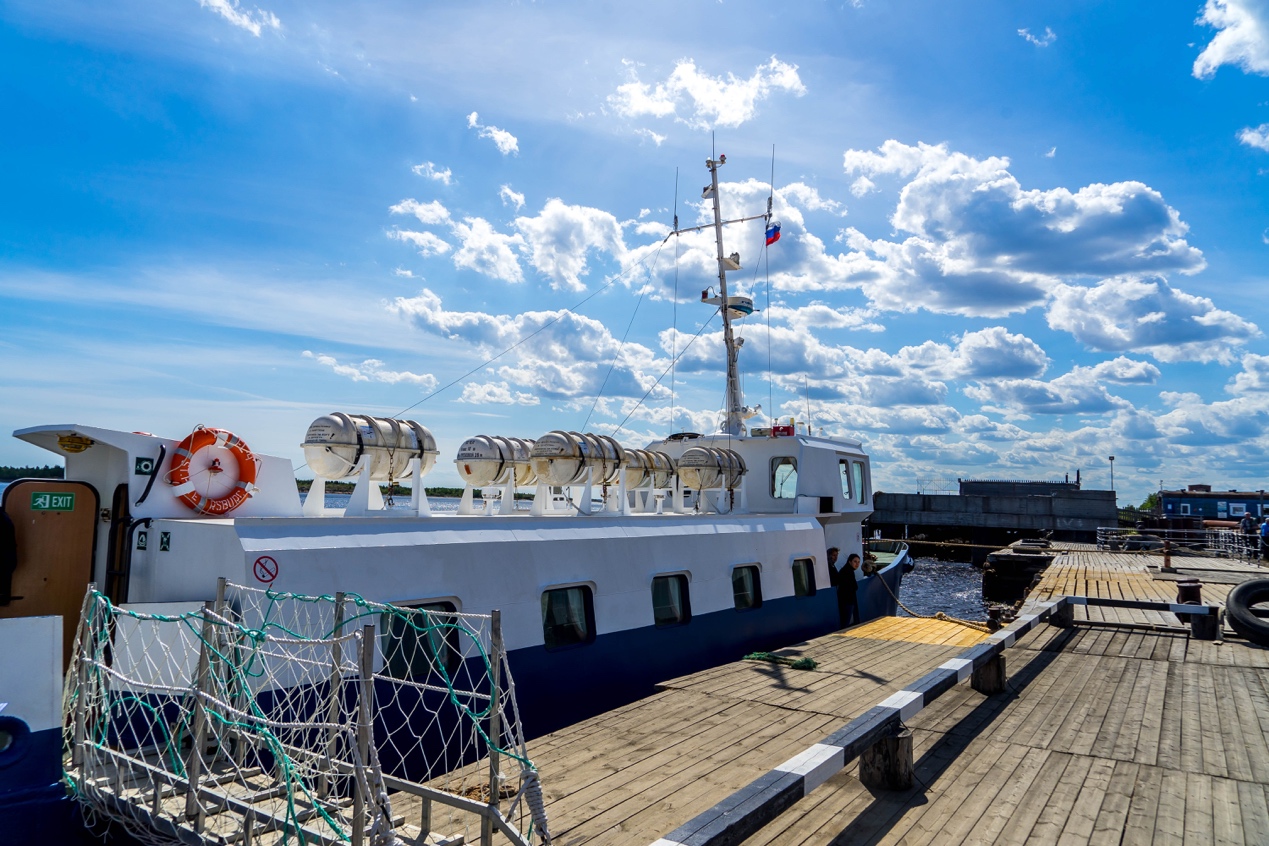
The island’s towns are small, and from the simple pier where you disembark you can see the towering “onion tops” of the Solovetsky Monastery in the distance. This 15th-century Orthodox monastery is the island’s most famous attraction and is not only a World Heritage Site, but is also the motif of the current Russian 500-ruble bill.
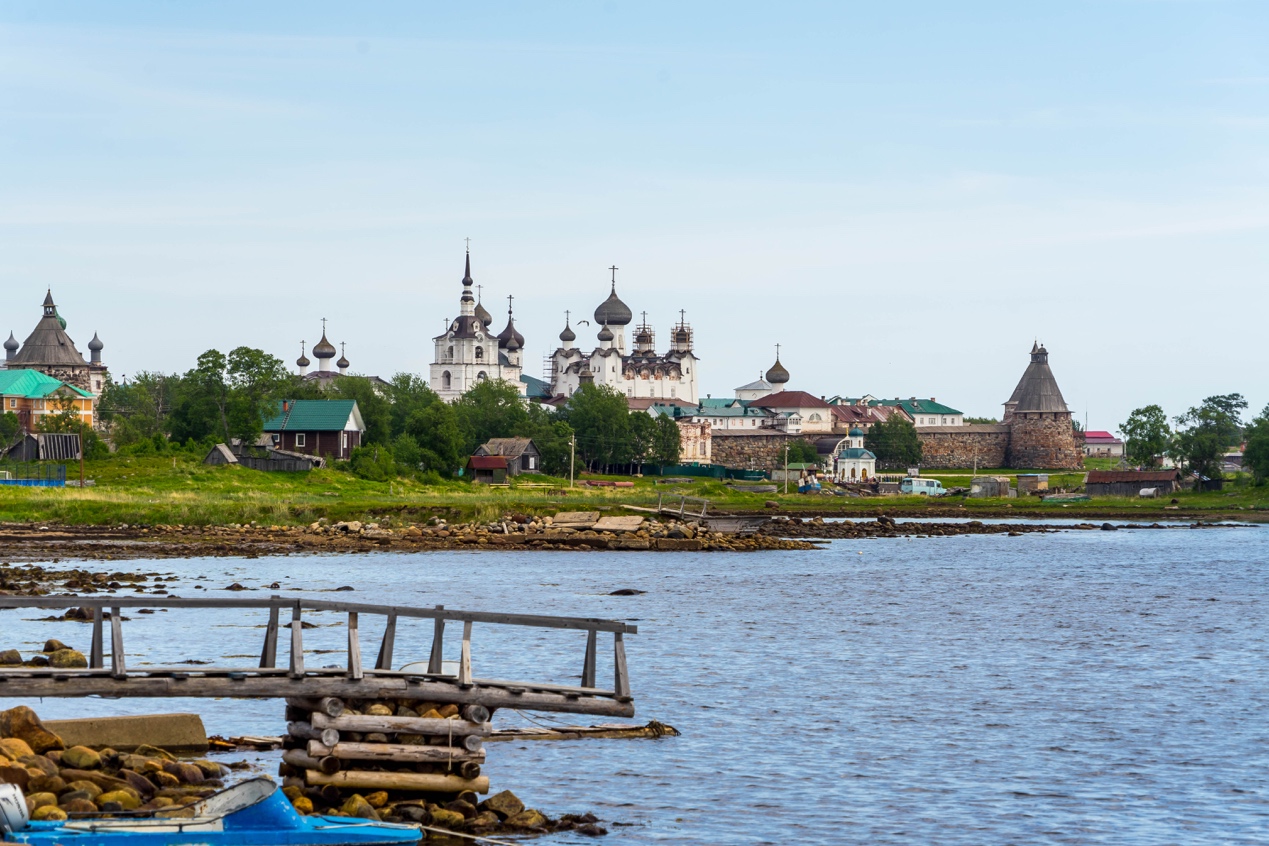
The island is well served by roads, so visitors can simply rent a bicycle and travel through it with abandon, or even take a leap off a special roadside lakeside jump and let the cold water stir every clump of nerves in their bodies.
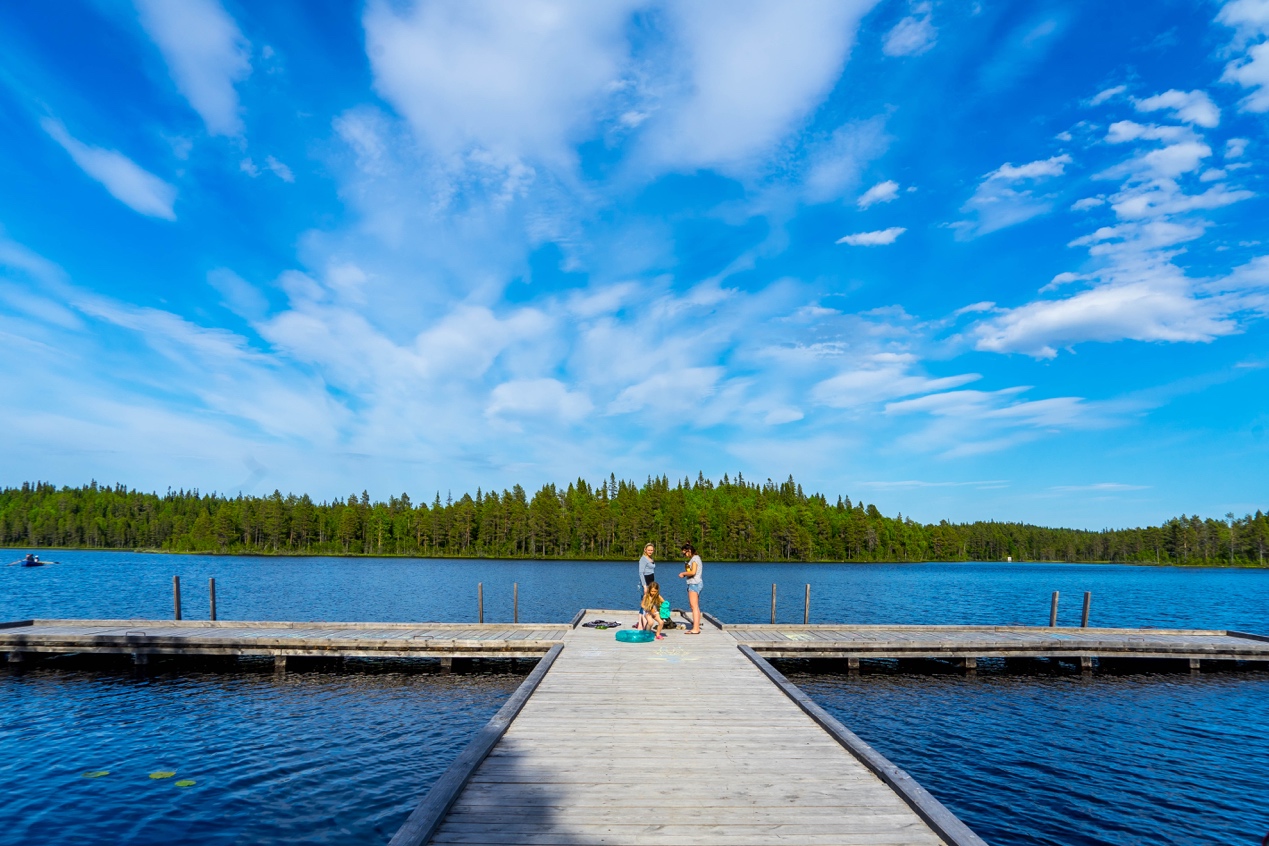
However to see for yourself the beluga whales that stop here briefly to breed their offspring is not so simple. They usually congregate in only a small patch of water on the west side of the island, which means riding halfway down the road and following the signs set by previous generations through pristine forest trails. Unlike the barren polar regions many people imagine, the jungle here is lush and leafy, as if vying to take advantage of the island’s brief summer days to grow to its fullest. Equally “abundant” are the armies of mosquitoes that lurk everywhere. The sudden appearance of two “mobile blood banks” is a perfect target for the hungry mosquitoes to feast on, on an island where most animals cannot survive due to the lack of human presence.The muddy road conditions combined with the indefensible mosquito attack made us abandon the car and walk. Under the hot sun, there was no sound of wind in the jungle, but the annoying chirping of mosquitoes in our ears only added to the stifling heat.
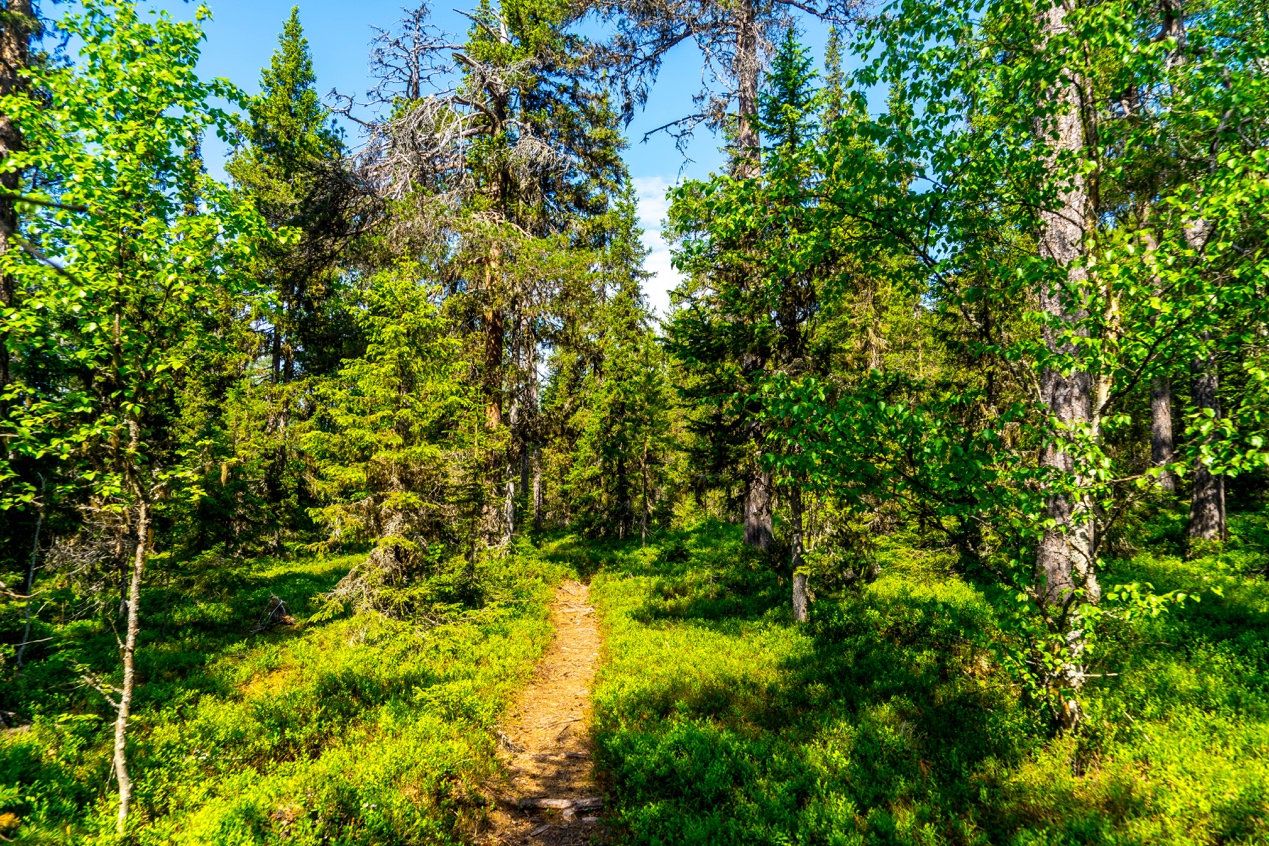
The muddy road conditions combined with the indefensible mosquito attack made us abandon the car and walk. Under the hot sun, there was no sound of wind in the jungle, but the annoying chirping of mosquitoes in our ears only added to the stifling heat.

Finally, we emerged from the jungle and found a flat clearing on the shore to set up our tent, only to discover with a start that it was the highest tide of the day and the mudflats leading to the whale-watching spot were completely submerged, so the only way to get there was to wait until low tide, which was six hours later. I quickly worked out that time: 1am.

My companion gave me a sidelong glance: 1 a.m., going to see beluga whales in the dark? I was chagrined by the unfortunate timing when it occurred to me: this is the Arctic! Even though we were not yet in the Arctic Circle and there was no polar day, it was just about mid-June, and even though the sun would set briefly, it shouldn’t be completely dark. We set the alarm for 12 midnight, but none of us could sleep. Hundreds of mosquitoes were lying in the dark outside the transparent net tent, roaring one after another, staring at the two fat “prey” in the tent. This scene, let a person really do not know whether to first head numb, or first dense phobia.

It is June, the best time of the year for the Solovetsky Islands. Often the ice floes on the White Sea melt away completely in May and refreeze in October. During the majority of the freeze, the whole island is covered with cold and ice, and it is said that in those days the camps were never worried about prisoners escaping – in such harsh conditions, escape was tantamount to suicide. During the short summer months, prisoners were faced with open seas that were dozens of kilometers wide and took three hours to travel by speedboat. According to the Gulag Archipelago, of the 500,000 people held in the camp over 16 years, only three escaped with the help of fishermen.

As midnight approached, the sun was setting almost due north, a phenomenon only seen in the far north. The mosquitoes that had been gathering for so long seemed to have finally lost patience with their “prey” and were gradually leaving. We dared to lift the tent curtain and saw that the tide had completely receded and the sea, which had just been swollen, had become a straight path to the whale-watching island in the distance, and we couldn’t wait to get out.
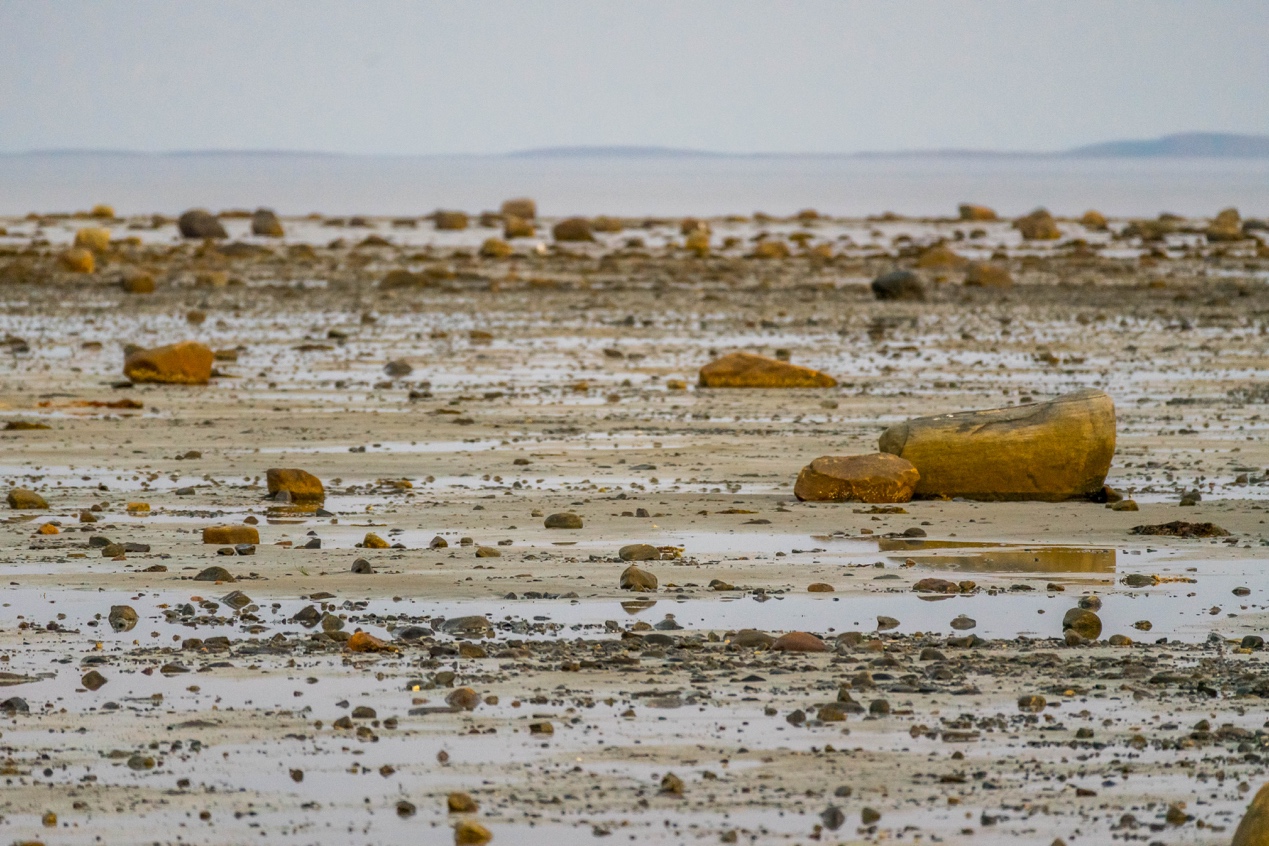
The mudflats exposed by the low tide are still muddy, and there are even many puddles of water that cannot be avoided, and the feet in sneakers are soon soaked by the cold seawater. However, when the afterglow of the sunset reflected in the deep or shallow puddles, revealing golden or fiery red colors, one could not help but exclaim: Compared to the eyes of “in heaven”, the feet of “in hell” are nothing!
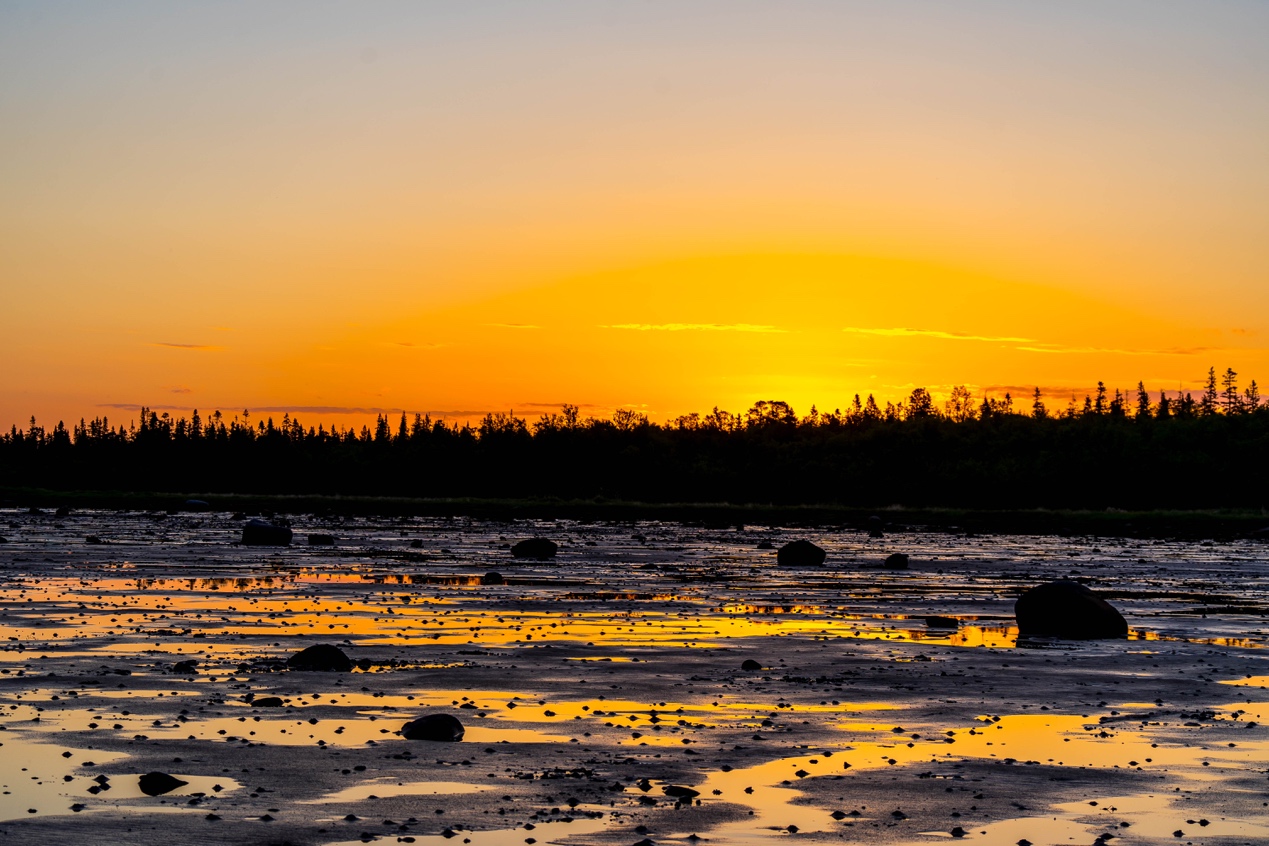
Approaching the whale-watching island, we instead seemed to be intruding on gull territory. The birds were circling and calling at low altitude, and even repeatedly swooping and diving at us, as if to show off or to demonstrate. Gulls born in the Arctic have never seen people, so naturally they are not afraid of them.
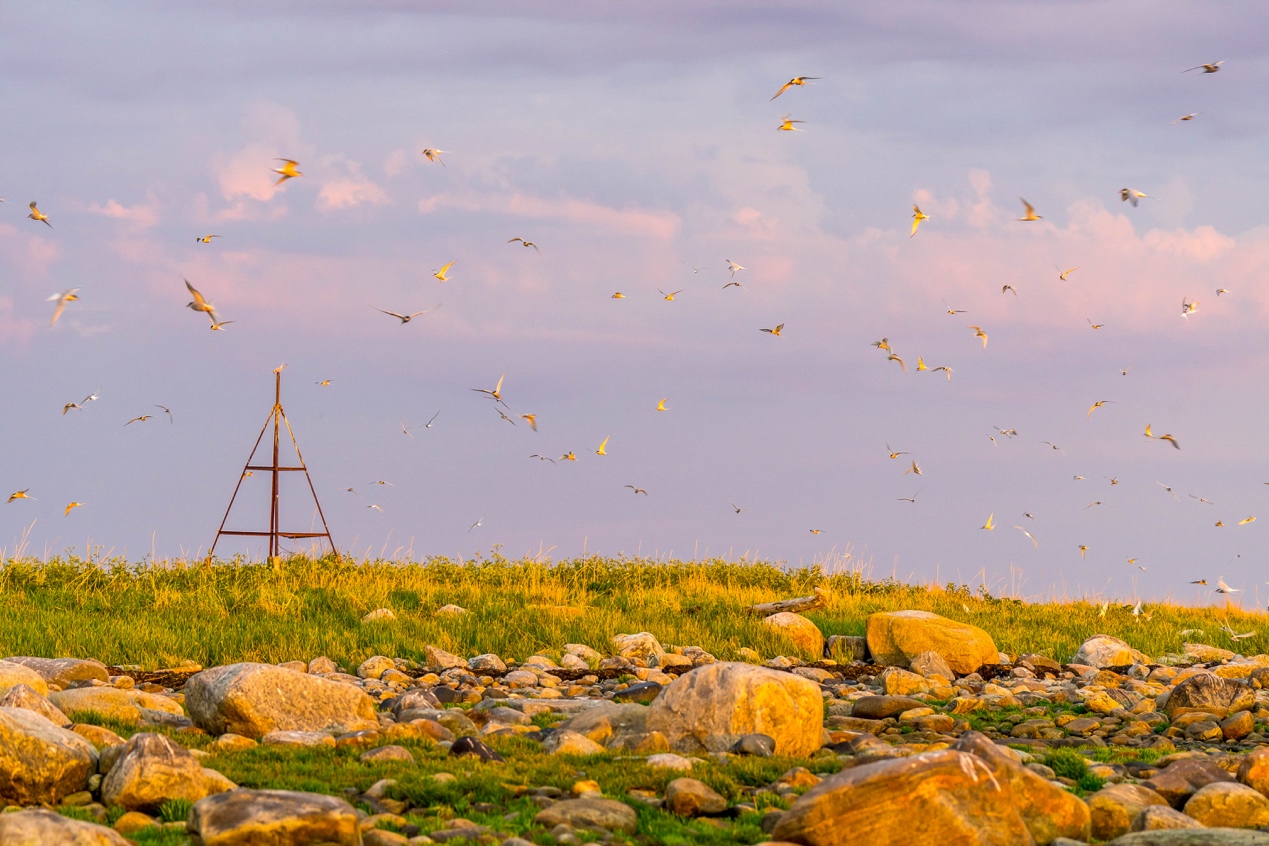
As for the star of the night, the beluga whale, sorry, we couldn’t find even the slightest trace of it, no matter how hard we looked. Well, we didn’t see any beluga whales, but fortunately we still had this endless flock of seagulls (and mosquitoes?) We were accompanied. That was all I could do to reassure my companions with a joking smile.
I was about to leave in resentment, but suddenly I could hardly open my eyes when I was struck by a bright light: it was the sun! It had risen again not far from where it had just set! I knew that this would be the last sunrise we would see on our entire trip to the North Pole. All being well, we would be entering the Arctic Circle by sunset that night. And until we leave the Arctic, it will be high in the sky at all times, never setting.
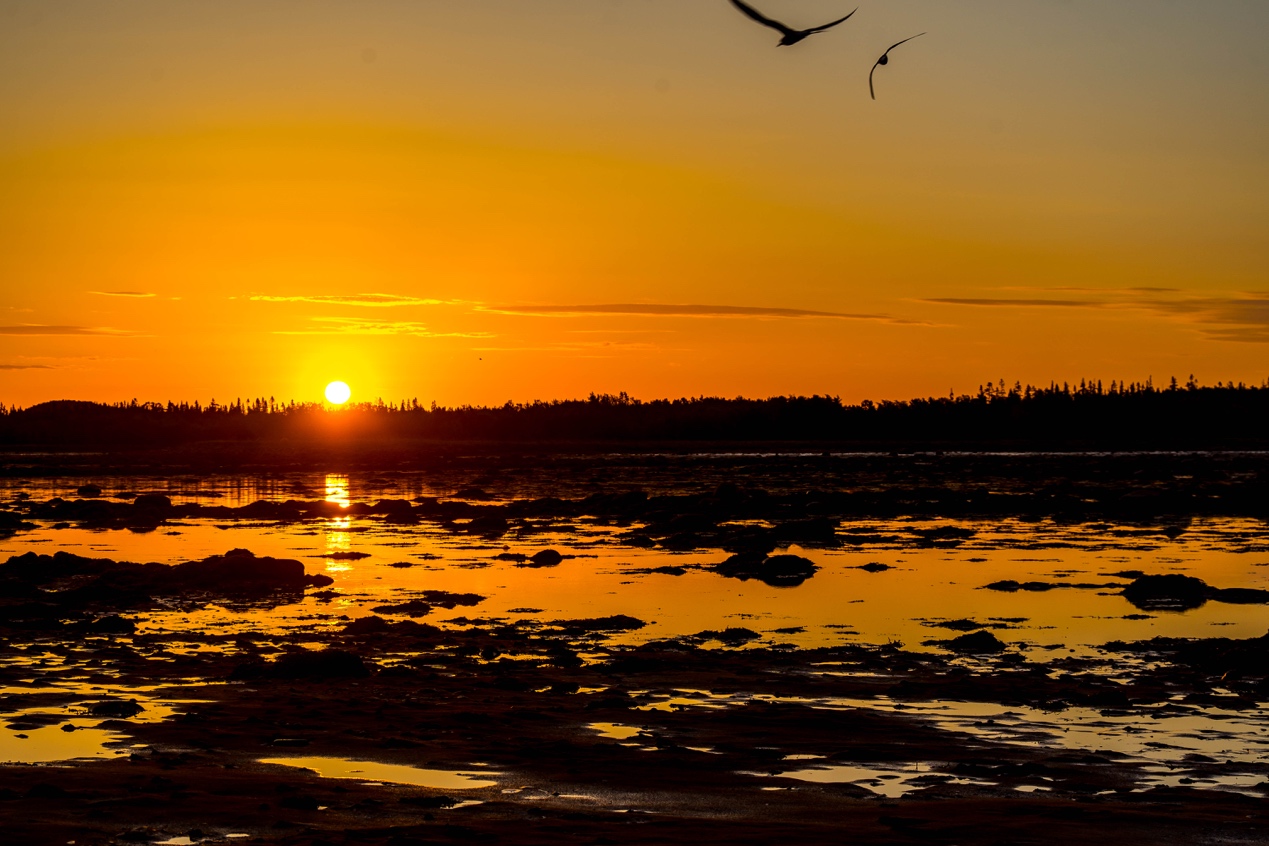
Back at the tent, we slept until sunrise, then rode leisurely back to town, where we even had time to peruse the monastery and the “gulag” museum before sailing. The modest museum has rows and rows of creepy pictures of the prisoners, and although the descriptions are only in Russian, you can guess: frightened faces in prison, working in rags, and even the grisly appearance of those who died (frozen and starved or shot) and were casually dumped on the shore.
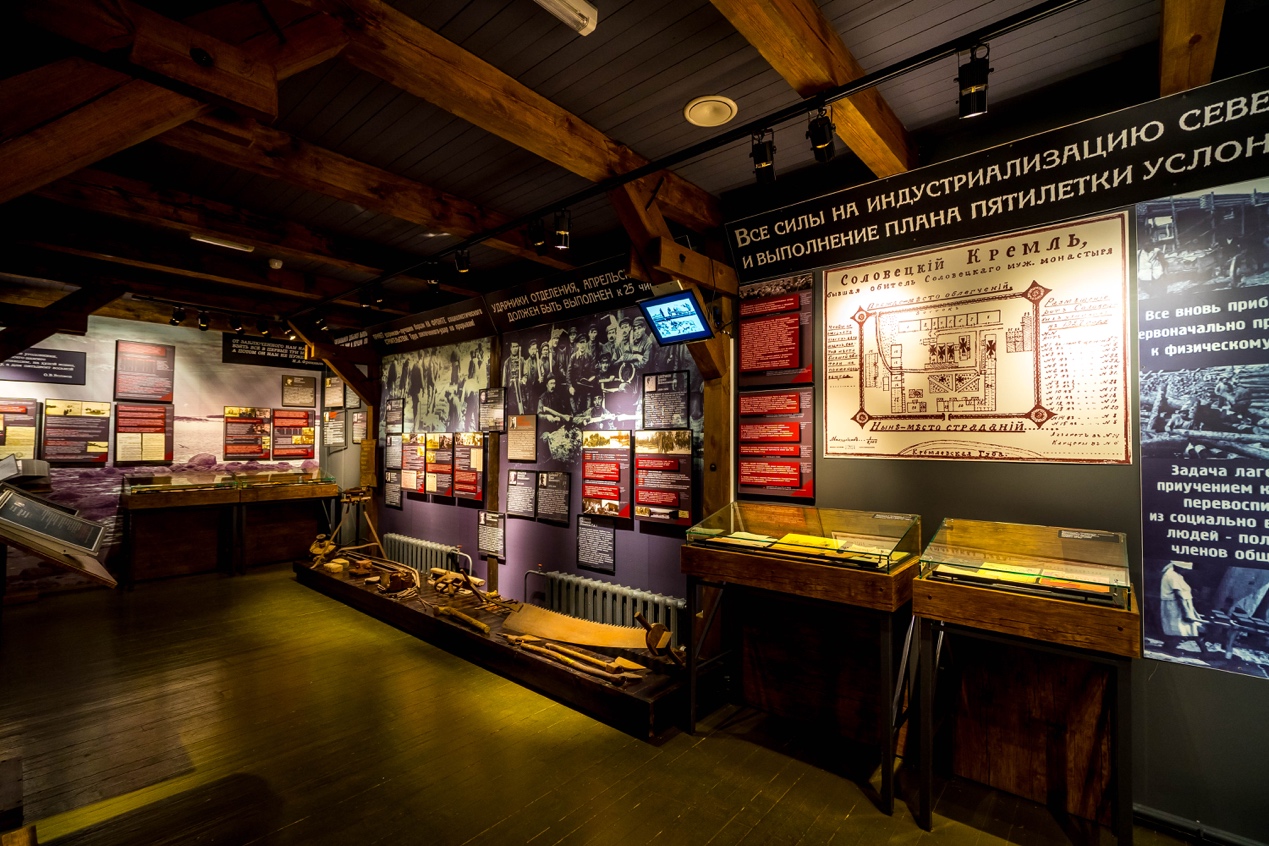
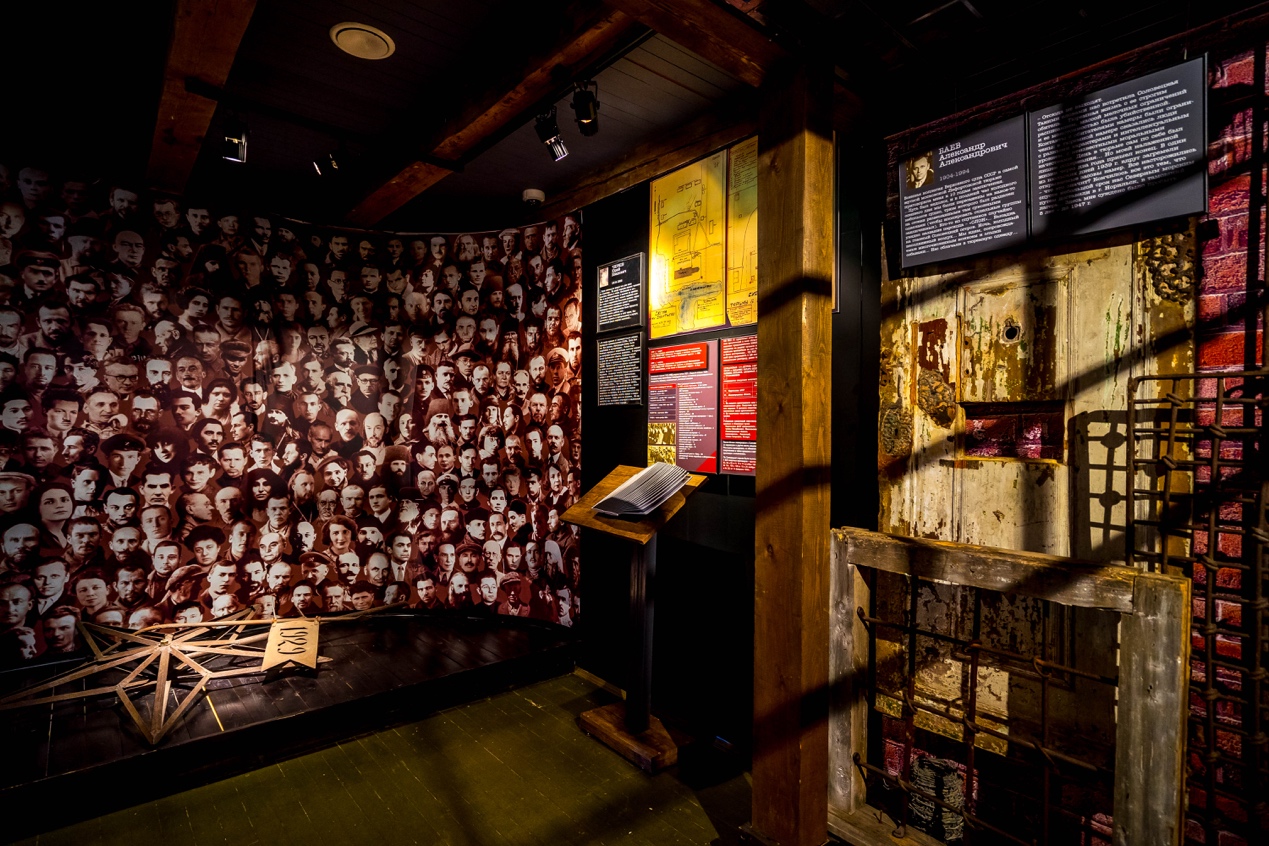
In the accounts of the Gulag Archipelago, these “political prisoners” were arrested from various places (homes, workplaces and even bathhouses), usually without any time to prepare. Once they were arrested, they lost all contact with the outside world. The clothes they were wearing at the time of their arrest, whether they were thin shirts, coats or even tuxedos, would be the only clothing they would wear during their imprisonment.
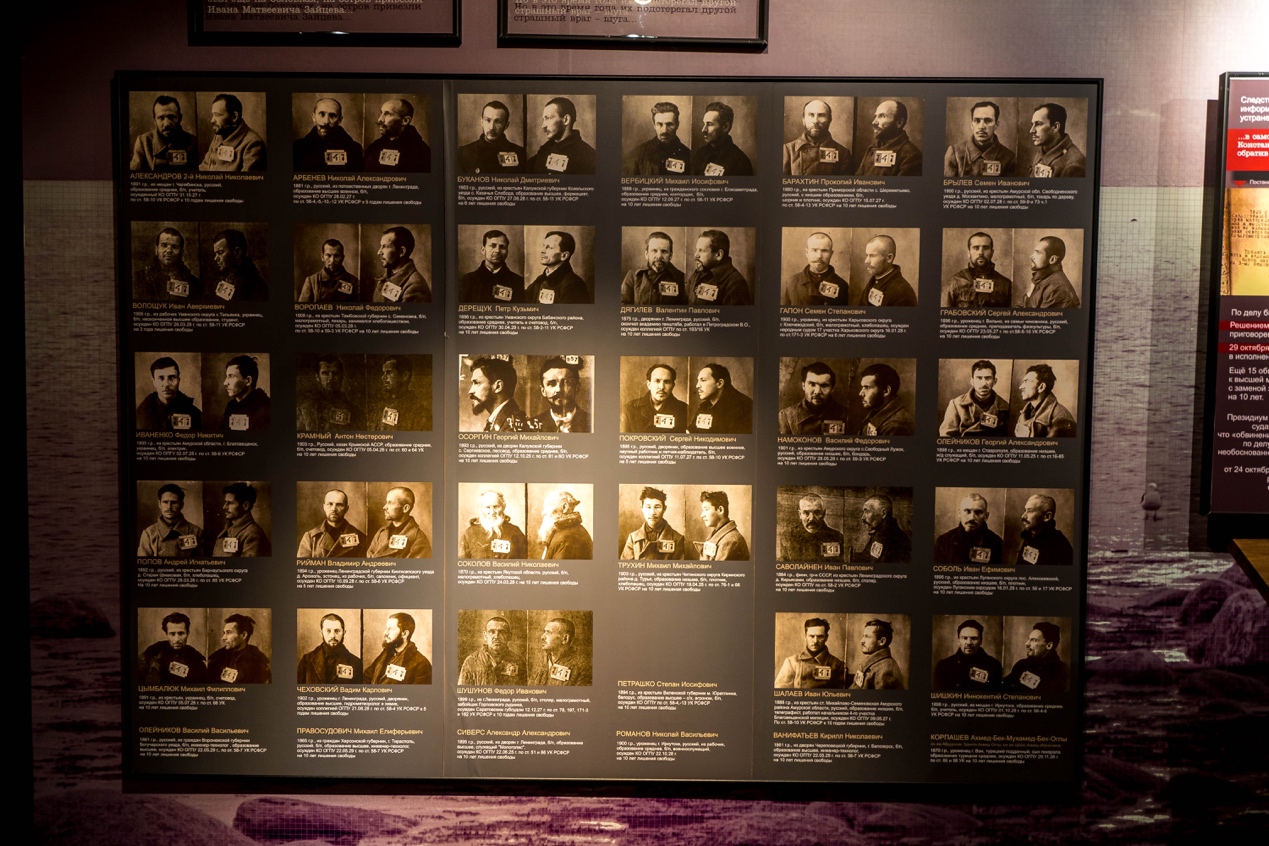
The Solovetsky Monastery, which had an important place in Russian religious history, was the main place where the prisoners were held. Originally built as a defense against foreign invasion, the high, medieval-style stone walls served as a ready-made fence for the camp, while the towering towers, built as a show of religious majesty, served as a natural watchtower to monitor the inmates from all angles. To be fair, it was a sizeable monastery, but I still can’t believe that it housed up to tens of thousands of Gulag prisoners at one time.
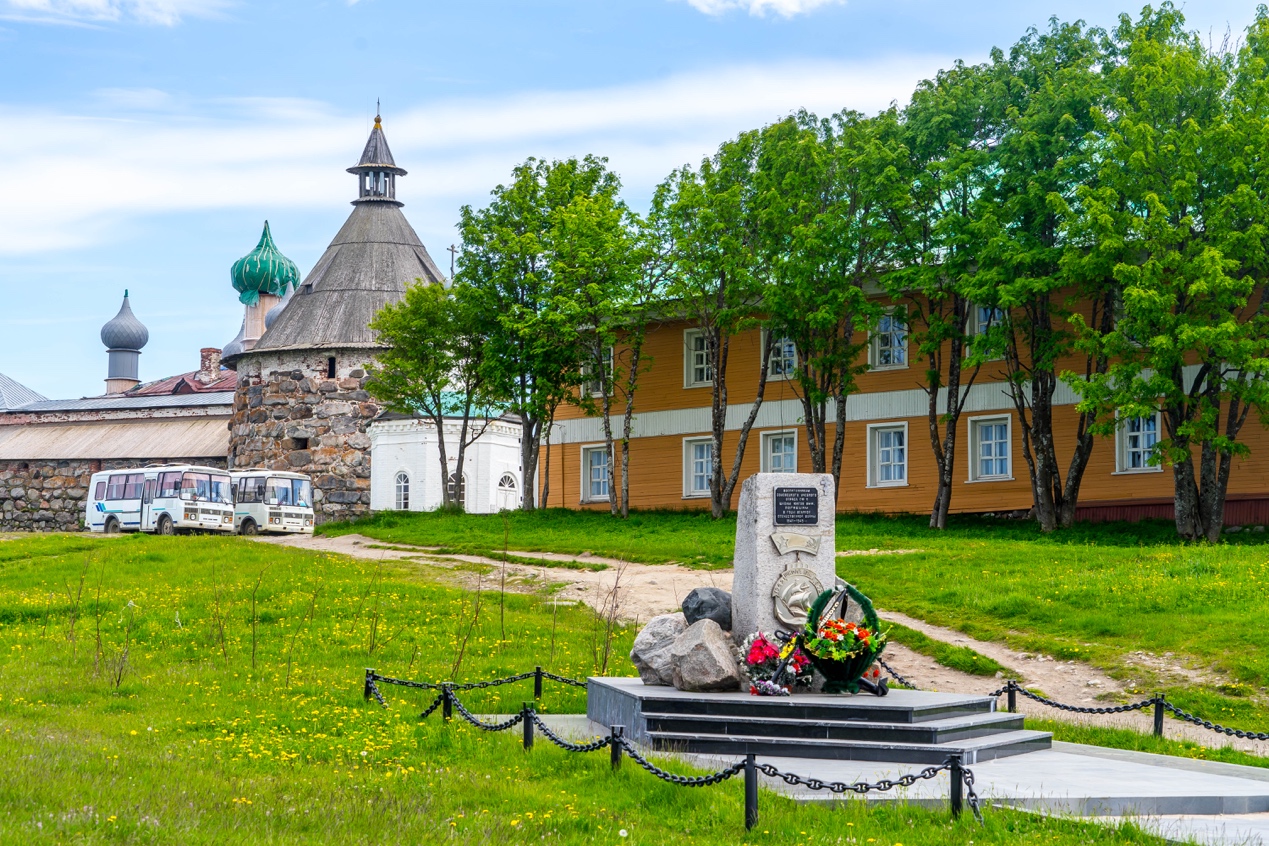
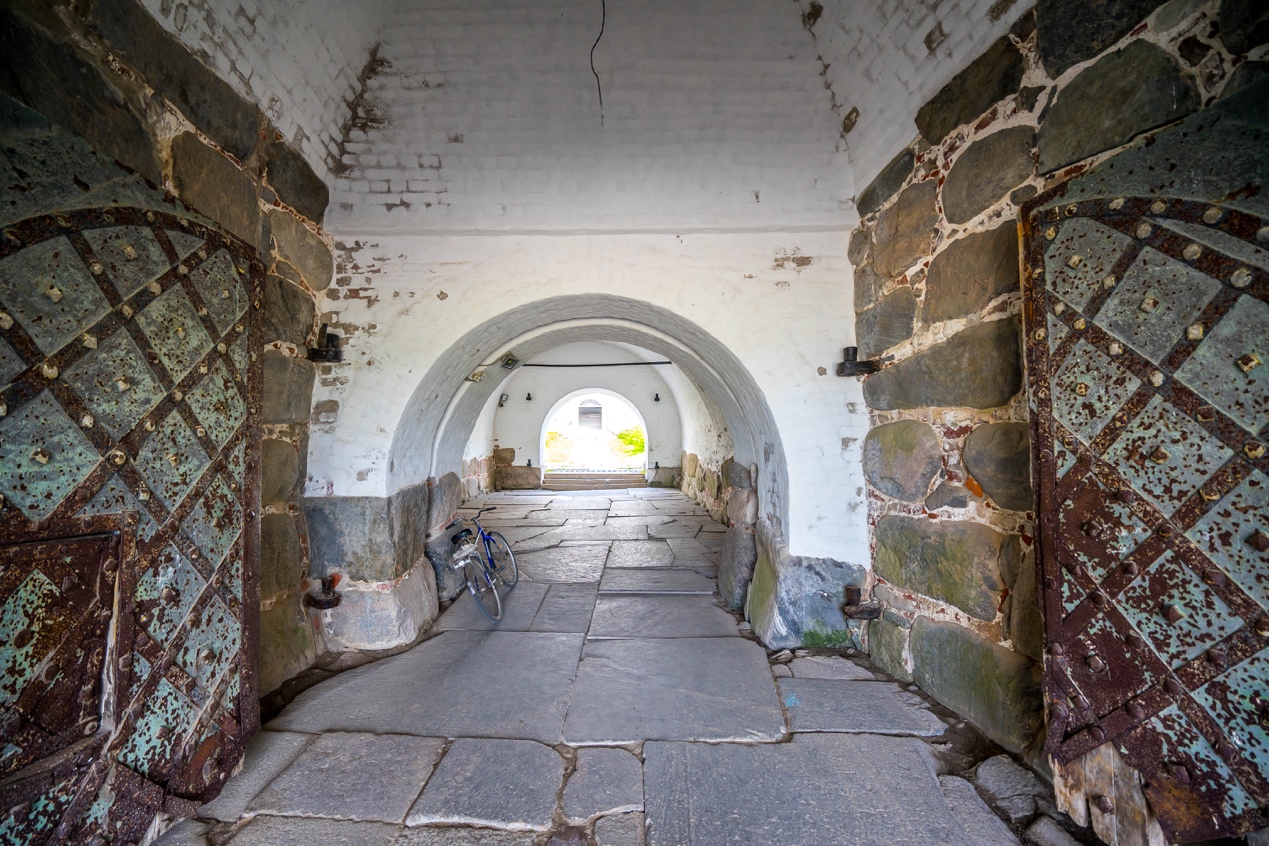
Today, the monastery, which was severely damaged during the concentration camp period, has been largely restored to its original state, and the gleaming gold Orthodox icons have returned to the church after decades of absence. Only one or two rooms have been purposely left empty to display the history of the camp. The tall half-domes are connected by metal crossbars sprouting abruptly from each other. The design, which was intended to strengthen the building, is a perfect illustration of the poor conditions of the camp: to accommodate more prisoners, the bunk beds were raised to four or five levels, and each prisoner enjoyed less space than the inside of a coffin. The beds, raised so high that they had lost their centre of gravity, were “cleverly” fixed to metal bars in the roof. This “three-dimensional” design managed to double the capacity of the room. However, even so, many of the subsequent inmates were forced to sleep under the beds, on the floor, or even huddled in the corners.
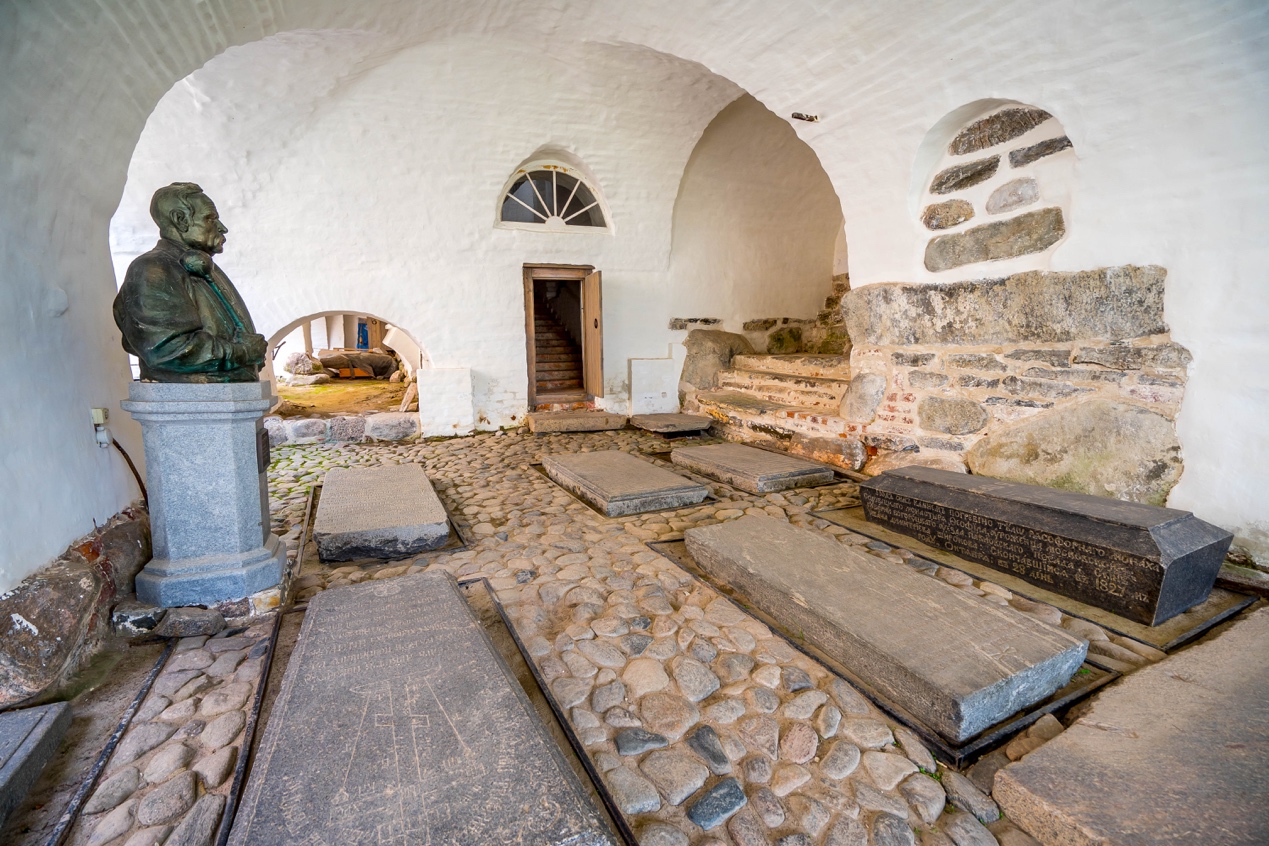
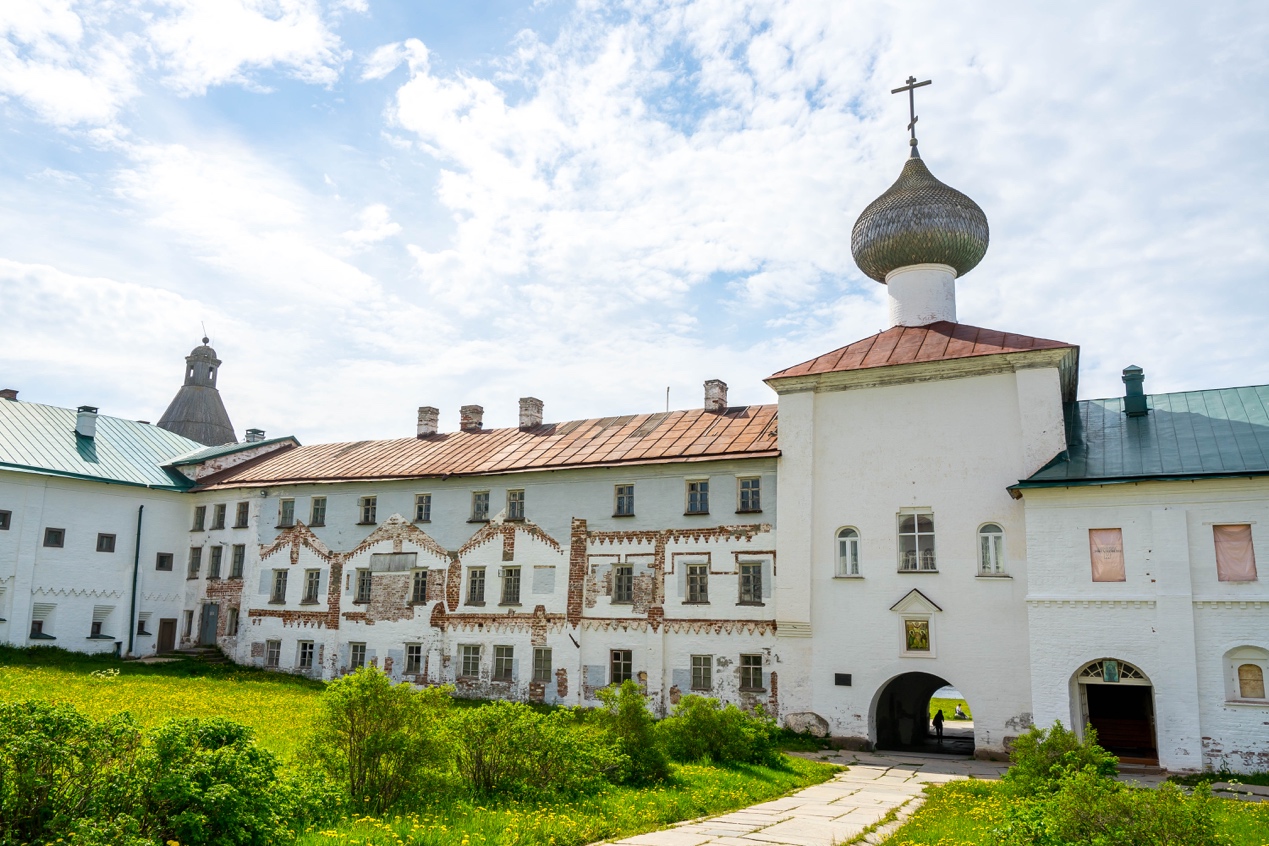
Although the camp existed on the island for only 16 years, until the collapse of the Soviet Union in 1991, the entire island was a tightly sealed off military zone with a minimum of less than 20 inhabitants. Only now, with Putin’s call for “tourism development”, Russians have come to the island in droves, recognizing the opportunities. While the more remote parts of the island still retain their Soviet-era clichés for the time being, trendy restaurants and guest houses have filled the modest tourist area next to the monastery, making it hard to find the sobriety of the past.

